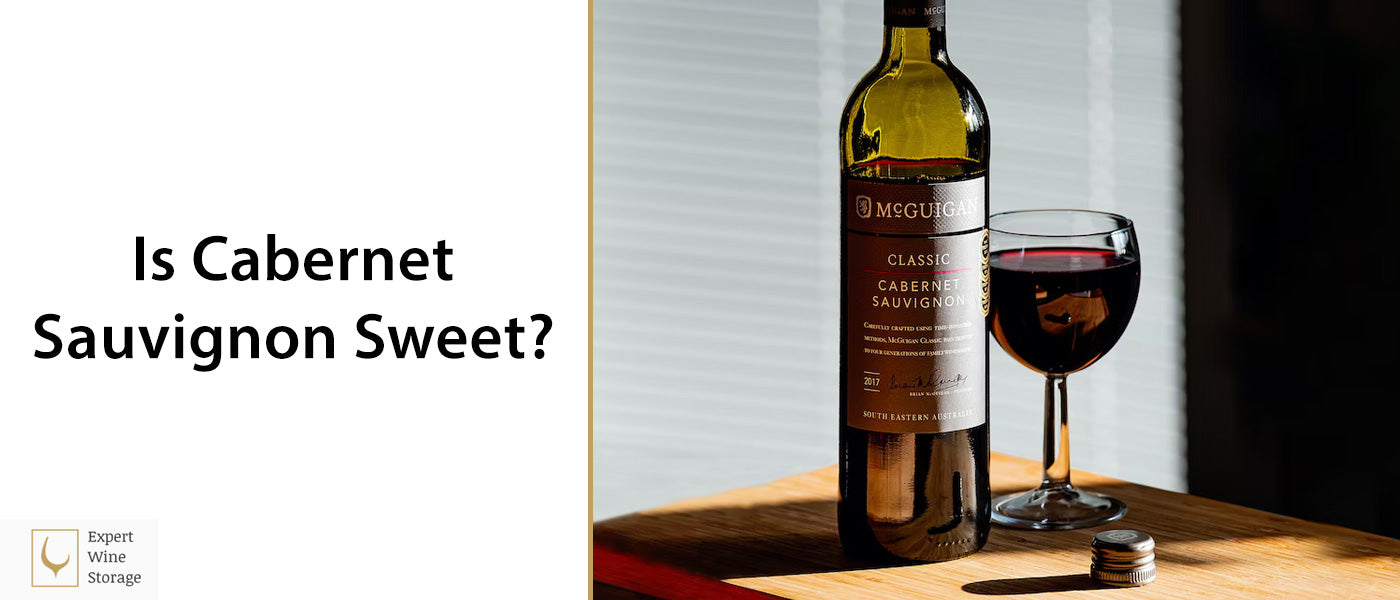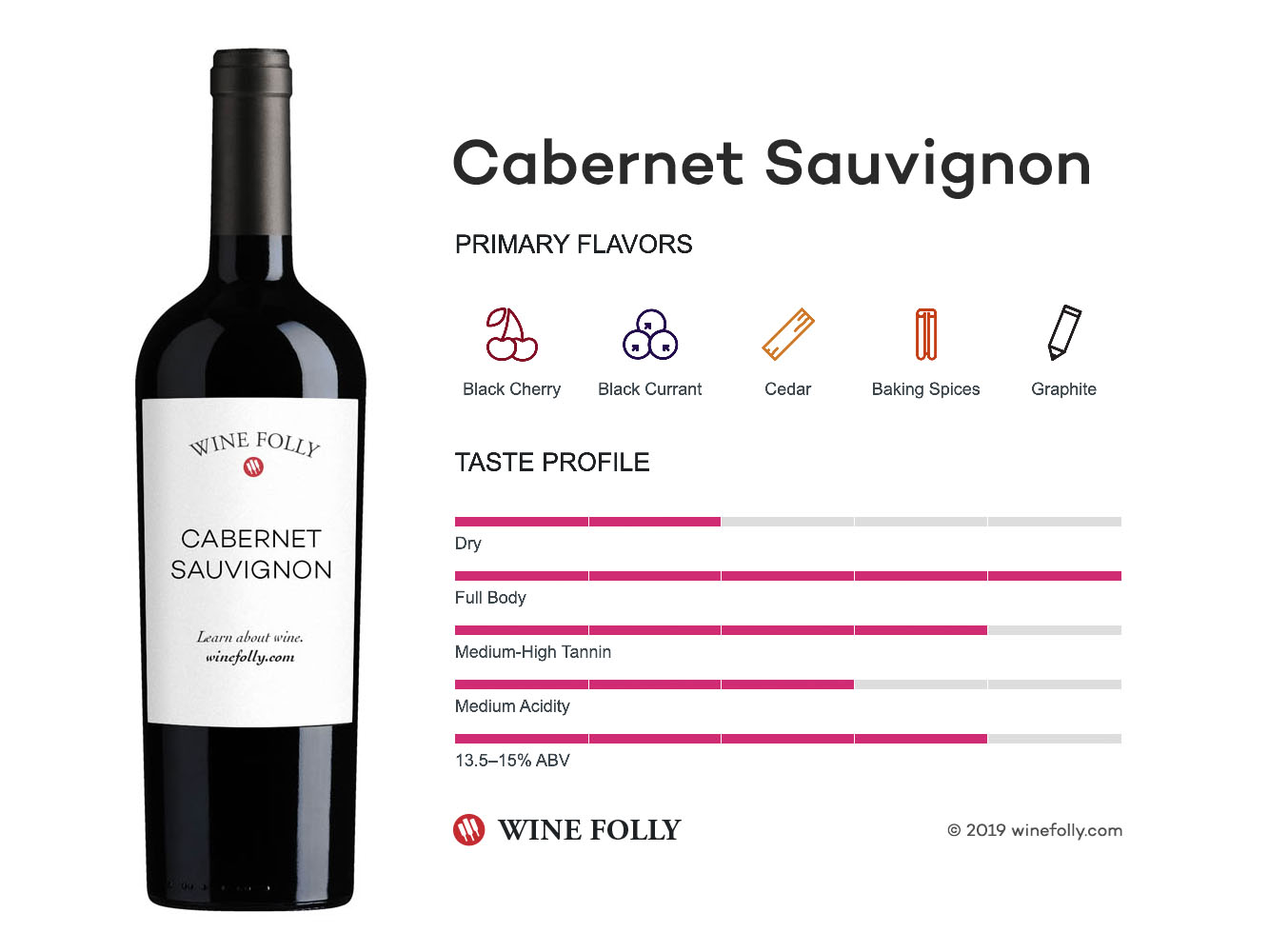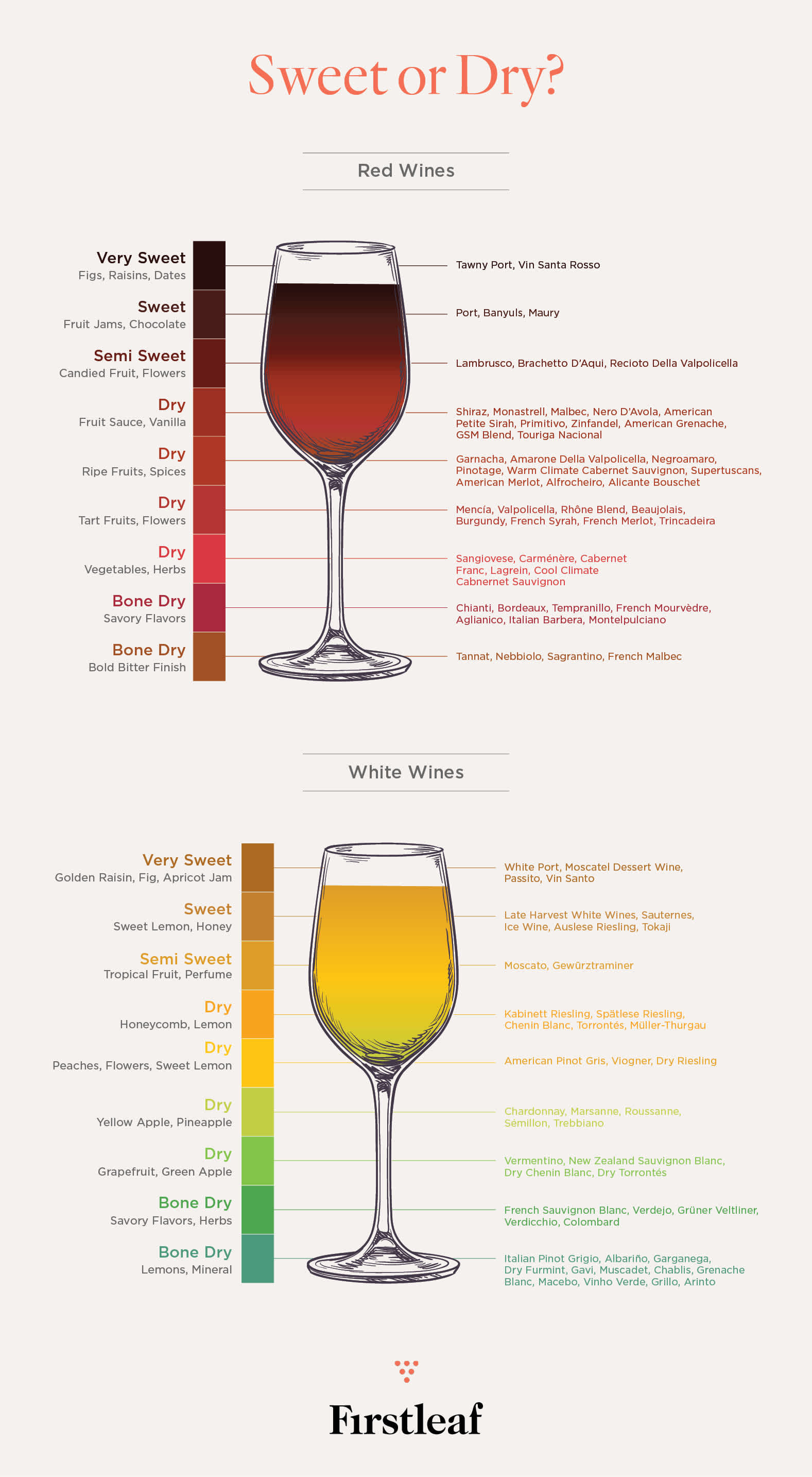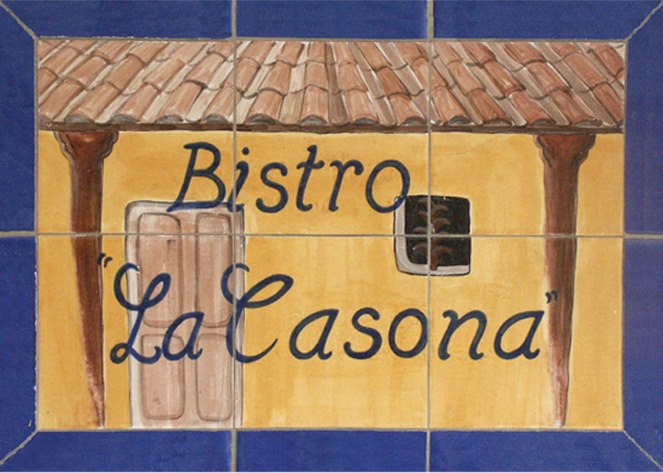Characteristics Of Cabernet Sauvignon Wine

Cabernet Sauvignon is known for its bold and full-bodied characteristics, making it a popular choice among wine enthusiasts. It typically has high tannins, which give the wine structure and a firm mouthfeel. The flavors of Cabernet Sauvignon can range from blackcurrant and cherry to blackberry and plum. It often exhibits notes of cedar, tobacco, and vanilla from oak aging. The wine has medium to high acidity, which helps to balance the tannins and enhance the overall profile. Cabernet Sauvignon has a long and lingering finish, adding to its complexity and appeal.
Cabernet Sauvignon Flavor Profile
Cabernet Sauvignon is renowned for its bold and complex flavor profile. It showcases intense flavors of blackcurrant, cherry, blackberry, and plum. These fruit flavors are often complemented by notes of cedar, tobacco, and vanilla derived from oak aging. The wine’s high tannin content contributes to its firm structure and adds a hint of bitterness. The medium to high acidity in Cabernet Sauvignon helps balance the intense flavors and tannins, providing a well-rounded and harmonious taste experience. Overall, Cabernet Sauvignon offers a rich, full-bodied, and deeply satisfying flavor profile.
Cabernet Sauvignon Aromas And Tastes
Cabernet Sauvignon offers a wide range of aromas and tastes that contribute to its distinct flavor profile. On the nose, this wine often exhibits notes of blackcurrant, cherry, and blackberry, providing a fruity and inviting scent. As you taste it, you’ll experience the intensity of these dark fruit flavors, accompanied by hints of cedar, tobacco, and vanilla derived from oak aging. The wine’s high tannin content adds structure and a touch of bitterness, while the medium to high acidity provides balance. These aromas and tastes combine to create a rich and complex drinking experience.
Wine Tasting And Sweetness Levels

During a wine tasting of Cabernet Sauvignon, it’s important to understand the sweetness levels to fully appreciate the wine’s flavor profile. Cabernet Sauvignon is typically known for its dryness, meaning it has low levels of residual sugar. This dryness allows the other flavors, such as the fruitiness and the oak-aging notes, to shine. By understanding the sweetness levels, wine enthusiasts can better appreciate the complexity and balance of Cabernet Sauvignon. It’s worth noting that even though Cabernet Sauvignon is not sweet, it can still have a perception of sweetness due to its fruit-forward flavors.
Perceiving Sweetness In Wine
When it comes to perceiving sweetness in wine, it goes beyond just the presence of residual sugar. The perception of sweetness is influenced by a combination of factors such as the fruit flavors, acidity, alcohol content, and tannins. The fruit-forward flavors of Cabernet Sauvignon can create the illusion of sweetness, even though the wine itself is dry. The level of ripeness of the grapes and the balance of these elements play a significant role in how sweet or dry a wine tastes. It’s important to engage your senses and consider the overall profile of the wine when determining its perceived sweetness.
Factors Influencing Sweetness In Cabernet Sauvignon
Several factors can influence the perceived sweetness in Cabernet Sauvignon wine. One of the main factors is the level of ripeness of the grapes at the time of harvest. Riper grapes tend to have higher sugar levels and can contribute to a perceived sweetness in the wine. Additionally, the acidity and alcohol content can also impact the perception of sweetness. High levels of acidity can balance out the sweetness, while higher alcohol content can enhance the perception of sweetness. Balancing these factors is essential in creating a well-rounded and harmonious wine.
Differentiating Sweetness From Other Wine Attributes

Differentiating sweetness from other wine attributes is essential in understanding and appreciating the complexity of Cabernet Sauvignon. While sweetness refers to the perceived sugar content in the wine, there are other factors that contribute to its profile. Tannins, for example, are compounds found in the skins, seeds, and stems of grapes that create a drying sensation in the mouth. Balancing acidity is another crucial aspect, as it provides freshness and structure to the wine. By recognizing these various attributes and their interactions, wine enthusiasts can better understand and evaluate the overall character of Cabernet Sauvignon.
Understanding Tannins In Cabernet Sauvignon
Tannins play a vital role in the structure and aging potential of Cabernet Sauvignon. These compounds are naturally occurring in the skins, seeds, and stems of grapes and contribute to the wine’s mouthfeel and flavor profile. In Cabernet Sauvignon, tannins are typically high, resulting in a dry and sometimes astringent sensation in the mouth. They provide the wine with a firm structure and grip, balancing the fruit flavors and adding complexity. Aging Cabernet Sauvignon can help soften its tannins, allowing for a smoother and more integrated drinking experience.
Balancing Acidity And Sweetness In Wine
Balancing acidity and sweetness is crucial in creating a harmonious wine. In the case of Cabernet Sauvignon, the high tannins and acidity help to counterbalance any residual sweetness, resulting in a dry and well-structured wine. The acidity in the wine adds brightness and freshness to the flavor profile, while the sweetness can provide a touch of roundness and complexity. Winemakers carefully adjust these elements during the winemaking process to achieve the desired balance. Understanding this delicate interplay between acidity and sweetness is key to appreciating the complex profile of Cabernet Sauvignon.
Varietal Comparison: Cabernet Sauvignon Vs. Sweet Wines

Cabernet Sauvignon is a dry red wine, which means it has low levels of residual sugar. In contrast, sweet wines contain higher amounts of sugar, leading to a noticeable sweetness on the palate. When comparing Cabernet Sauvignon with sweet wines like Moscato or Riesling, the difference in sweetness becomes apparent. Cabernet Sauvignon’s dry profile and bold flavors make it a suitable choice for those who prefer a more robust and less sweet wine. However, it’s important to note that sweetness preferences vary among individuals, so ultimately, it’s a matter of personal taste.
Cabernet Sauvignon Vs. Dessert Wines
When comparing Cabernet Sauvignon to dessert wines, such as Sauternes or Port, the difference in sweetness is quite significant. Cabernet Sauvignon is known for its dry profile, while dessert wines are intentionally made with high sugar content to create a sweet and luscious flavor. These dessert wines are often enjoyed as a sweet treat after a meal or paired with desserts to complement their richness. So, if you prefer a drier and more robust wine, Cabernet Sauvignon is the better choice, while dessert wines offer a indulgent and sweet experience.
Cabernet Sauvignon Vs. White Zinfandel
Cabernet Sauvignon and White Zinfandel are two very different wines, both in terms of flavor and sweetness levels. Cabernet Sauvignon is a full-bodied red wine known for its boldness, high tannins, and dry profile. On the other hand, White Zinfandel is a light-bodied rosé wine that is sweeter, with fruity flavors like strawberries and watermelon. The sweetness in White Zinfandel comes from a residual sugar that is intentionally left in the wine during fermentation. So, if you prefer a drier and robust wine, Cabernet Sauvignon is the better choice, while White Zinfandel offers a sweeter and lighter option.
Pairing Cabernet Sauvignon With Food

When it comes to pairing Cabernet Sauvignon with food, there are a few key considerations to keep in mind. The rich flavor and high tannin content of Cabernet Sauvignon make it an ideal companion for rich grilled meats, such as steak or lamb. Additionally, its intensity and boldness make it a great match for dishes with peppery sauces or spices. For a truly complimentary experience, consider pairing Cabernet Sauvignon with dishes that have savory or smoky flavors. The robustness of the wine will enhance the flavors of these dishes, creating a truly delightful dining experience.
Best Food Pairings For Cabernet Sauvignon
Cabernet Sauvignon pairs exceptionally well with a variety of food options. Its rich flavor and high tannin content make it the ideal companion for rich grilled meats like steak or lamb. The boldness of the wine also complements dishes with peppery sauces or spices, adding depth and complexity. For a truly delectable experience, consider pairing Cabernet Sauvignon with savory or smoky flavors. The robust nature of the wine enhances the flavors of these dishes, creating a harmonious and satisfying pairing. So, next time you’re enjoying a glass of Cabernet Sauvignon, consider indulging in a perfectly matched meal.
Enhancing Flavor Profiles With Complementary Dishes
Enhancing the flavor profiles of Cabernet Sauvignon can be achieved by pairing it with complementary dishes. The rich and bold flavors of this wine can be enhanced by pairing it with dishes that have similar intensity. Grilled meats like steak or lamb are perfect choices as they provide a savory counterpart to the wine’s robustness. Other options include dishes with peppery sauces or spices, which add a layer of complexity to the wine. By choosing dishes that complement the characteristics of the wine, you can elevate your dining experience and truly appreciate the full potential of Cabernet Sauvignon.
Conclusion

In conclusion, understanding the sweetness levels in Cabernet Sauvignon is essential in appreciating its unique flavor profile. While Cabernet Sauvignon wines are generally not sweet, they offer a rich and bold taste experience. The perception of sweetness in these wines comes from the ripe fruit flavors rather than residual sugar. By recognizing the characteristics of Cabernet Sauvignon and its compatibility with food, wine enthusiasts can elevate their dining experiences. Whether you prefer a dry and robust wine or a touch of sweetness, Cabernet Sauvignon offers a wide range of options to satisfy your palate.
Exploring The Complexity Of Cabernet Sauvignon
Exploring the Complexity of Cabernet Sauvignon:
Cabernet Sauvignon is known for its complexity and depth of flavors, making it a favorite among wine enthusiasts. Its intricate profile includes notes of blackberry, cassis, dark chocolate, and tobacco, along with hints of cedar and mint. The wine’s tannic structure provides a firm backbone and aging potential, adding further layers of complexity to its taste. With each sip, one can appreciate the interplay of flavors and the long, lingering finish. This complexity makes Cabernet Sauvignon a fascinating wine to explore and enjoy, offering a truly unique drinking experience.
Key Takeaways And Recommendations
After exploring the complexity of Cabernet Sauvignon and understanding its sweetness levels, there are a few key takeaways and recommendations to keep in mind.
- Cabernet Sauvignon is typically a dry wine, but sweetness can vary depending on factors such as ripeness and winemaking techniques.
- When tasting Cabernet Sauvignon, focus on its flavor profile, which includes notes of blackberry, cassis, dark chocolate, and tobacco.
- Consider balancing the wine’s tannins and acidity to enhance the overall tasting experience.
- Cabernet Sauvignon pairs well with flavorful dishes such as grilled meats, roasted vegetables, and aged cheeses.
- Remember to choose a Cabernet Sauvignon that aligns with your preferred sweetness level to fully enjoy its rich and complex characteristics.
By keeping these recommendations in mind, you can navigate the world of Cabernet Sauvignon and appreciate its unique qualities.
FAQ About “is Cabernet Sauvignon Sweet: Understanding Wine Profiles”
Q: What makes Cabernet Sauvignon different from other types of wine in terms of sweetness?
A: Cabernet Sauvignon is generally a dry red wine, which means it is not sweet like dessert wines. Its flavor profile is characterized by tannins and dark fruit flavors rather than sweetness.
Q: How can one determine the sweetness level of Cabernet Sauvignon wines?
A: The sweetness level of Cabernet Sauvignon wines can be determined by checking the label or researching the specific wine. In general, Cabernet Sauvignon is known for being a dry wine, but there may be variations among different producers.
Q: Are there any specific terms or descriptors used to indicate sweetness in Cabernet Sauvignon wines?
A: Terms such as “dry”, “off-dry”, and “sweet” are commonly used to describe the sweetness level of wines, including Cabernet Sauvignon. Additionally, descriptors like “fruit-forward” or “jammy” may hint at the wine’s fruitiness rather than sweetness.
Q: Can the region where Cabernet Sauvignon is produced affect its sweetness?
A: Yes, the region where Cabernet Sauvignon is grown can have an impact on the wine’s sweetness. Warmer climates tend to produce riper grapes with higher sugar levels, potentially resulting in a slightly sweeter wine compared to those from cooler regions.
Q: How should one pair Cabernet Sauvignon with food considering its not sweet nature?
A: Due to its dry and tannic nature, Cabernet Sauvignon pairs well with rich, flavorful dishes such as red meats, aged cheeses, and hearty pasta dishes. Its acidity and tannins help cut through the richness of such foods, creating a balanced dining experience.

Bistro La Casona is a charming and vibrant culinary destination located at Calle Arenales 222, nestled between Murillo and Aroma in the heart of Casco Viejo/Centro Histórico, Santa Cruz de la Sierra, Bolivia. Our story is one of passion, creativity, and a deep love for exceptional dining experiences. Bistro La Casona has carved out a niche for itself as a beacon of culinary excellence in the heart of the historical center of Santa Cruz de la Sierra. Our journey began with a simple idea – to create a space where food, ambiance, and hospitality come together to offer an unforgettable experience.